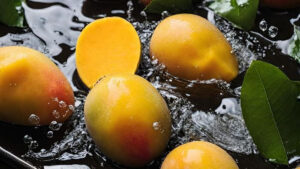Mithila Makhana gets GI Tag

Union government has awarded Geographical Indication (GI) tag to Mithila Makhana. With this move, the growers will get the maximum price for their premium produce.
Over five lakh farmers of Mithila region of Bihar will be benefitted from this decision.
[ad id=’18625′]
In a tweet Commerce and Industry Minister Piyush Goyal said that Mithila Makhana registered with GI Tag, farmers will get profit and it will be easier to earn. Due to Geographical Indication Tag to Mithila Makhana in the festive season, people outside Bihar will be able to use this auspicious material with reverence.
Once a product gets this tag, any person or company cannot sell a similar item under that name. This tag is valid for a period of 10 years following which it can be renewed.
The other benefits of GI registration include legal protection to that item, prevention against unauthorised use by others, and promoting exports.
About Mithila Makhana:
“Makhana” is derived from the Sanskrit word for grain Mak. Mak is the meaning of sacrifice. Grain that is widely used in sacrifice. “Makhana” is one of the choicest aquatic cash fruit crop of Mithila region of Bihar.In Mithila culture of Bihar, Makhana is known as Makhaan in Maithili. It is an auspicious ingredient in offerings to the Goddesses during festivals and is used to show reverence.
[ad id=’18429′]
Where is Mithila Makhana produced ?
Geographical area of production of “Mithila Makhana” takes place in 21 out of 38 districts, mostly situated in the North of the Bihar state. It is a unique aquatic cash fruit crop in the state mainly grown in Darbhanga, Sitamarhi, Madhubani, Muzaffarpur, Sheohar, Purvi Champaran, Paschim Champaran, Vaishali, Gopalganj, Siwan, Chapra, Samastipur, Begusarai, Khagaria, Saharsa, Supaul, Madhepura, Araria, Kishanganj, Purnea and Katihar of Mithila region.
Climatic conditions for Mithila Makhana production
The plant does best in locations with hot, dry summers and cold winters. It is plant of tropical and subtropical climate. The optimum temperature range for its growth and development, the conducive range of air temperature is 20-35°C, relative humidity 65-90% and annual rainfall 100-250 cm.
Makhana, being a popular aquatic fruit crop has a heavy water requirement. Thus, assured availability of irrigation water is the prime need for its cultivation especially in field condition.
Moreover, it also needs permanent standing water throughout its growth period. Seeds are collected in the late summer and early autumn, and may be eaten raw or cooked. The plant is cultivated for its seeds in lowland ponds in India.
Initially, makhana is grown in stagnant perennial water bodies like ponds, land depressions, oxbow lakes, swamps, and ditches but realizing the importance, it has been commercialized as a major aquatic horticultural crop. Now, Makhana cultivation is started in lowlands area in shallow water under field condition. Clay to loam soil is suitable for growing successful makhana crop.
Makhana is one of the important dryfruit
It is one of the most common dry fruits utilized by the people due to low fat content, high contents of carbohydrates, protein and minerals. Both raw and fried Makhana are fairly rich in essential amino acids. Edible perisperm constitutes 80 per cent starch.
Makhana is a store house of macro and micro-nutrients. The seeds are eaten raw or roasted. The seeds are sold in market and used as a farinaceous food. A lot of medicinal uses are recommended in the Indian system of medicine.
The different dietary components of the seeds were investigated to assess its nutritionalsignificance.
[ad id=’18427′]
What is Geographical Indication :
Geographical Indication is primarily an agricultural, natural or a manufactured product (handicrafts and industrial goods) originating from a definite geographical territory.
Typically, such a name conveys an assurance of quality and distinctiveness which is essentially attributable to the fact of its origin in that defined geographical locality.
Under Articles 1 (2) and 10 of the Paris Convention for the Protection of Industrial Property, geographical indications are covered as an element of IPRs. They are also covered under Articles 22 to 24 of the Trade Related Aspects of Intellectual Property Rights (TRIPS) Agreement, which was part of the Agreements concluding the Uruguay Round of GATT (General Agreement on Tariffs and Trade) negotiations.
[ad id=’18603′]
Geographical Indications in India is protected under the Geographical Indications of Goods (Registration & Protection) Act, 1999 and the Geographical Indications of Goods (Registration & Protection) Rules, 2002.
How is a geographical indication different from a trade mark?
A trade mark is a sign which is used in the course of trade and it distinguishes goods or services of one business with those of other businesses.
A geographical indication is an indication used to identify goods having special characteristics originating from a definite geographical territory.








